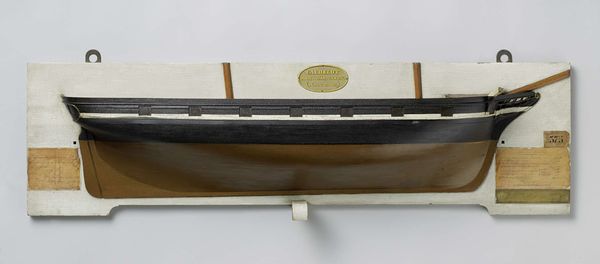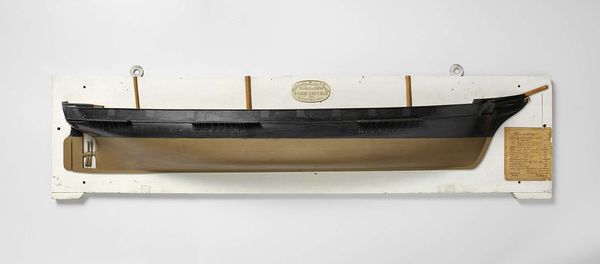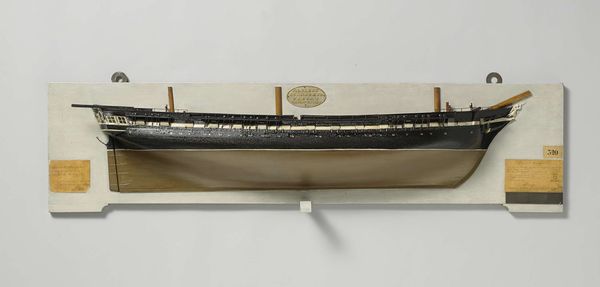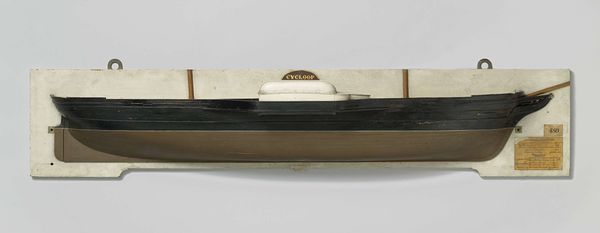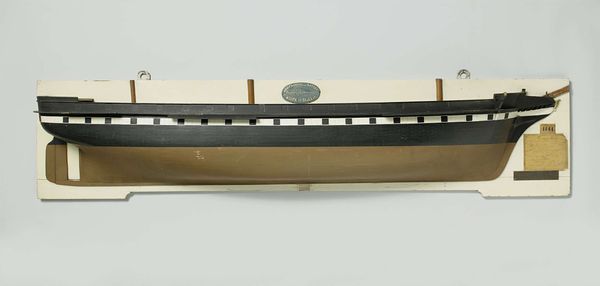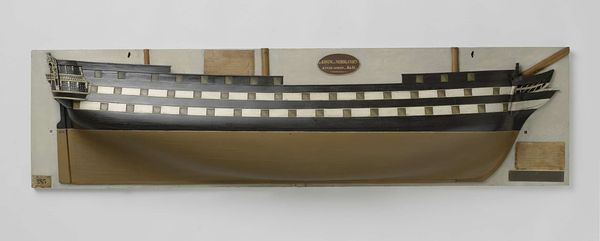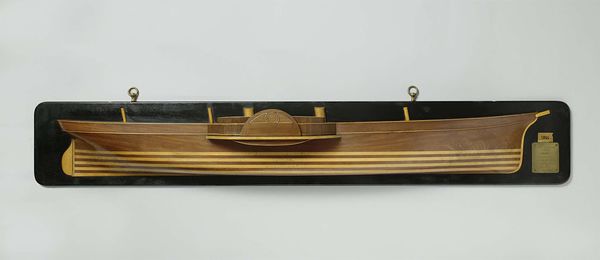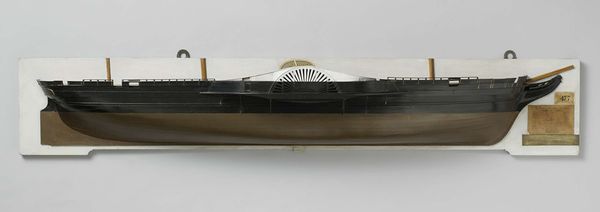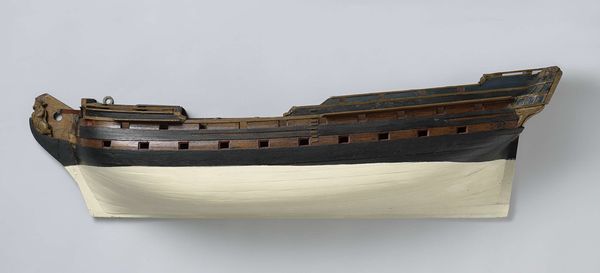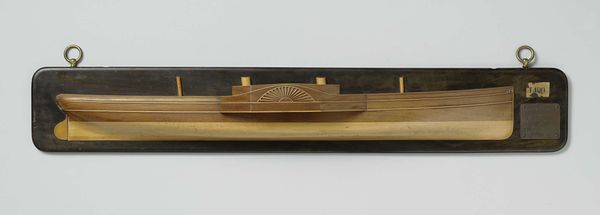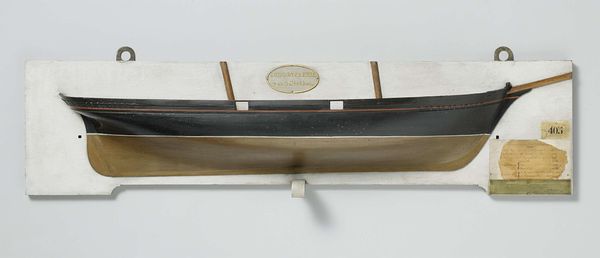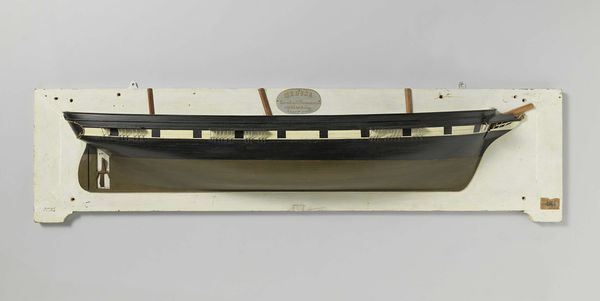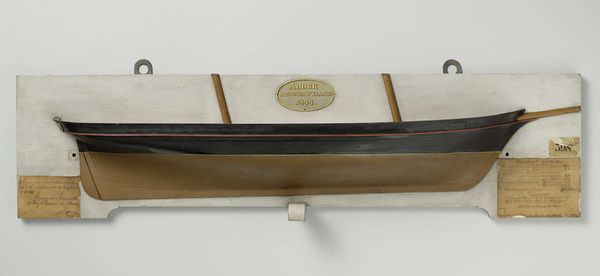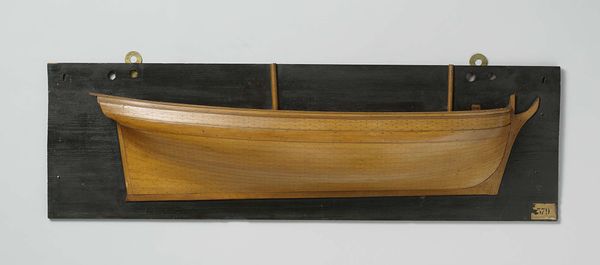
sculpture, wood
#
sculpture
#
wood
#
history-painting
#
realism
Dimensions: height 20.8 cm, width 91.8 cm, depth 12.5 cm
Copyright: Rijks Museum: Open Domain
Curator: Standing before us is an intriguing wooden sculpture titled "Half Model of a 3-Gun Schooner," created anonymously circa 1843-1844. Editor: It has such a restrained, almost melancholy presence. It looks like a memory rendered in dark wood, quite elegant and austere simultaneously. Curator: Indeed. These half models served as prototypes in shipbuilding, guiding the construction of vessels. They represent a shift towards more scientific and formalized naval architecture. We have to understand this craft as it existed alongside issues like colonialism and slavery at this time, issues tied to the function of these ships and to nautical navigation itself. Editor: That tension is potent here. It's beautiful, yet that beauty is born of a structure implicated in oppressive systems. There’s also something implicitly gendered about the naming and objectification of vessels, particularly warships, don’t you think? These ships become almost surrogates. Curator: Absolutely. This ties directly to the role these types of naval vessels played in maintaining global trade routes which perpetuated human trafficking. Furthermore, their commissions offered advancement to a particular demographic – white men of privilege. This model isn’t just about naval history; it’s a potent symbol. Editor: It also calls attention to what is absent. The ocean it's destined for. The crew that would operate it. Even the guns, which it can supposedly bear, are unfixed and unacknowledged here. Curator: The minimalist realism employed here truly encapsulates that liminal stage where vision meets reality. It reflects the optimism of design even though this vision will be made possible by those who have been systemically left out of its benefits. Editor: Examining pieces like this through an intersectional lens lets us critically analyze power structures both in the past and as they exist today. The half model doesn’t just memorialize nautical history; it serves as a historical pivot into more reflective modes of maritime history that we must engage. Curator: Exactly. Understanding art’s multifaceted connection with history can often invite new discussions that will provide unique avenues of research and contemplation. Editor: It makes you think, and feeling is vital to learning!
Comments
No comments
Be the first to comment and join the conversation on the ultimate creative platform.
